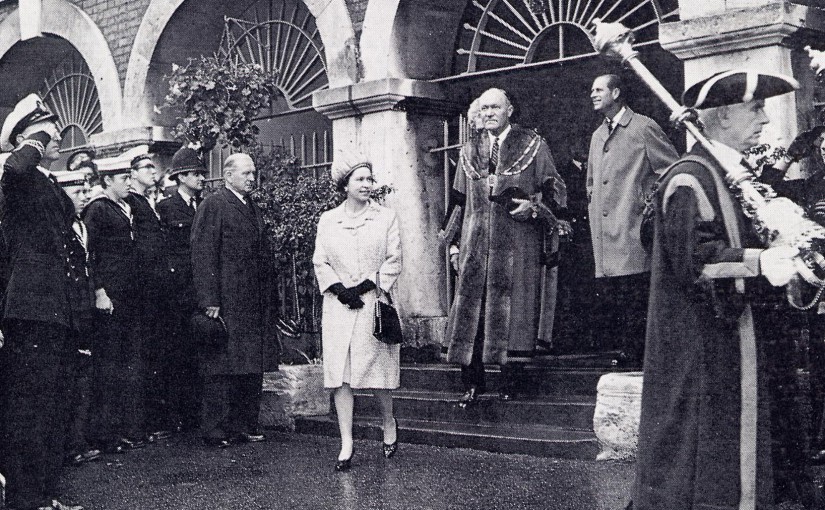W. J. Hacking
By Nan King
The name of Hacking has been associated with the town of Rye as long as most residents can remember, and when William John Hacking was installed as Mayor on 24 May 1965. he was following on a family tradition of service to the Borough as his father had been a member of Rye Council from 1912 to 1919 (though away on active service through the war years) and his mother became the first lady councillor in 1926. and the first lady to be elected as an alderwoman in 1945.
When he became Mayor. he stressed that the prosperity of the Borough depended on Rye continuing to thrive as a market town, and that it was the surrounding farming community that were important, as it was these people who provided the bulk of Rye tradespeople’s 52-week-a-year customers; and it is around agriculture and its many associations that Mr. Hacking’s life has centred.
Born in June. 1911. he lived with his family at the old Cadborough Farmhouse, where in days past John Wesley is reputed to have held classes for his pupils. The young John Hacking (he has always been known by his second name) was evacuated with his family to Littlestone during the First World War and remembers seeing one of the German Zeppelins come down in the middle of the marshes there. He later attended Anscombe St. Vincent’s prep. school at Eastbourne and from there went to Cranleigh Public School, where he earned his colours for cricket, rugby and hockey.
After Cranleigh, he left England for Canada in 1927. where he spent two and a half years. Whilst in Canada, he studied at the Agricultural College of Alberta for some time. He also spent time working on an Indian Reserve at Wainwright, and told me that because the corn crop was so bad the year he was there, he spent most of his time breaking in young Indian type horses. He was also a member of a fascinating working party of Dominion Explorers who travelled up the Peace River in canoes, their job being to mark out the various territories.
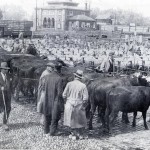
Farming, of course, was very different in the 1930’s; the cows were milked by hand and the milk taken by pony and trap to Rye Station. where it was put on the train for Hastings. It is in milk production that Mr. Hacking feels modernisation in farming methods has been most noticeable. Twice as many cows can be milked with less labour in shorter time, the result of mechanical milking machines, and the piping of milk direct from the cow in the parlour to a bulk tank, where it is cooled and awaits daily collection by the Dairy’s road tanker. Family farming policy has always aimed at being as self-supporting as possible—possibly stemming from the effects or two wars—and the ideal is to produce enough top quality foodstuffs, grass, etc.. for the cattle and sheep, without having to buy additional expensive products from outside sources.
Sport has played a major role in the life of John Hacking. On returning from Canada, it was not long before he was playing rugby for his old school side, and representing Sussex on the rugger field for several years. Yachting was also of great importance, and he sailed from Rye, Burnham and many other famous resorts. He teamed up with an old friend, Sans Dawes from Kent. and they became Champions of the 6 square metre class, which involved competing against many international sailors. However, John Hacking’s greatest love has always been the horse and he rode in point-to-point races for many years with great success. His greatest number of wins came on two horses, one which belonged to his wife was a mare named Patricia and the other was a bay gelding known as McEnery. who he had exchanged for the princely sum of two dry cows, as McEnery’s reputation apparently left a lot to be desired! However, he notched up endless victories, and went on to win the Romney Marsh Hunt Members’ Race for 7 consecutive years. and gave Robert (Mr. Hacking’s eldest son) a winning ride, the first time he rode in any form of race.
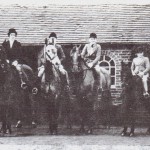
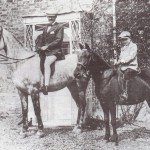
Following the hunting and racing seasons. cricket came into its own during the summer months, and for several years he captained Rye Cricket Club’s Tuesday side, and is now the President of the Club. With an indulgent smile on his face, he recalls a great partnership he once had with Frank Clark—who has only just retired from being a barber in Rye—when Rye were playing against Harlequins. he scored a century, and poor Frank Clark, who had played the innings of a lifetime, came out with only 7 runs to his credit.
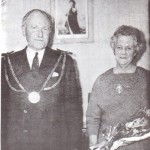
In 1936 at Rye Parish Church, he married Anne Reeves, whom he had known for many years and who lived with her family at Oaklands, only half a mile or so from Cadborough. Her father had moved to Rye when he was appointed Secretary of the Rye Golf Club. They now have a family of three sons—Robert, Clive and Peter, and a daughter—Sarah. In 7 addition they have two lively grandsons, named Paul and Nigel.
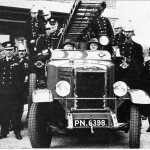
Prior to the last war, John Hacking was for several years, Captain of the town Fire Service, and he has vivid memories of pushing the old fire engine down Lion Street hill, to get it started during the cold winter months, the fire engine in those days being garaged in the Town Hall. His wife can remember long hours spent polishing the brass helmet and epaulettes of the very smart uniforms that used to be worn. When war broke out, the Fire Service became nationalised but he still remained with the Brigade. He recollects how lucky Rye was on two occasions when incendiary bombs might have caused much damage. The first incident was when an incendiary landed on the lead guttering of the Flushing Inn, burnt its way through the roof and landed in a washbasin in one of the bedrooms. The only action that was necessary to extinguish the incendiary was to turn on the tap! On another occasion, a similar bomb fell on a large heap of pitch at the Chemical Works at Rye Harbour and everyone naturally feared a disaster, as there were so many combustible products around. However, the bomb was so hot that it melted the pitch and extinguished itself.
Other memories of the war included the terrifying tip-and-run raids launched by the Germans, they would dart over the channel in their high speed planes, dive out of the sky and machine gun anything immediately on sight. These particular raids were understandably much feared by the farm workers, as they were usually out in open fields. In 1943 a doodlebug flew straight through the old Cadborough farmhouse, destroying it completely. and tragically killing Major W. B. Hacking.
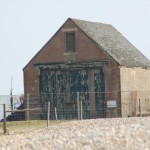
Old Major Hacking had previously narrowly escaped death. He was a member of the Rye Lifeboat Station and on one dreadfully stormy night, he failed to hear the siren and did not, as he would normally have done, saddle his horse and ride across country to Camber Castle, to join the lifeboat. This was November 15th. 1928, the night of the calamitous lifeboat disaster, when all 17 men aboard the lifeboat lost their lives. The tragedy was made more terrible by the discovery that the crew had not been drowned as was at first thought, but that they had all been choked to death by the life-jackets they had worn. As a result, Major William Hacking did not rest until he ensured that all life-jackets of this type were taken out of service.
In 1945, John Hacking was first elected a Councillor, and in 1958, he was made an Alderman. In May, 1965. he was installed as Mayor of Rye, and he held the office, after two re-elections, for three years. While Mayor, he played a part in a period of Rye’s most interesting modern history.
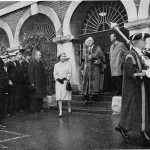
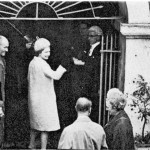
The greatest occasion whilst in office as Mayor came in October, 1966 when Her Majesty. Queen Elizabeth II and H.R.H. the Duke of Edinburgh, visited Rye, as part of a tour they were making of East Sussex. The Hacking family were extremely honoured when the Queen and Duke called at Cadborough to see the point-to-point horse, Augustine, formerly owned and bred by Her Majesty and given to Julie, Mr. Hacking’s daughter-in-law, when she left the racing stables where Augustine was trained. to marry Robert.
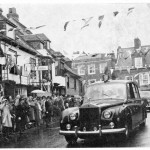
In addition to the honour of the Royal visit, the former Mayor said that it had been such an enjoyable occasion, due to the excellent arrangements made beforehand by his Grace, the Duke of Norfolk, and the local police force. Another landmark close to the heart of the then Mayor, was achieved when in October, 1966, the Foundation Stone for Badger Gate was laid, which now provides 30 bed-sitters for the elderly folk of Rye.
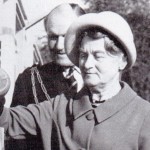
He also attended the historic event at Dover when Sir Robert Menzies was made Lord Warden of the Cinque Ports, succeeding the late Sir Winston Churchill. Alderman Hacking stressed that it was the wonderful friendship and support given to him and his wife by everyone from all walks of life, while Mayor and Lady Mayoress, that made their office such a memorable and pleasurable three years.
“Rye’s Own” February 1969
All articles, photographs, films and drawings on this web site are World Copyright Protected. No reproduction for publication without prior arrangement. © World Copyright 2015 Cinque Ports Magazines Rye Ltd., Guinea Hall Lodge Sellindge TN25 6EG
